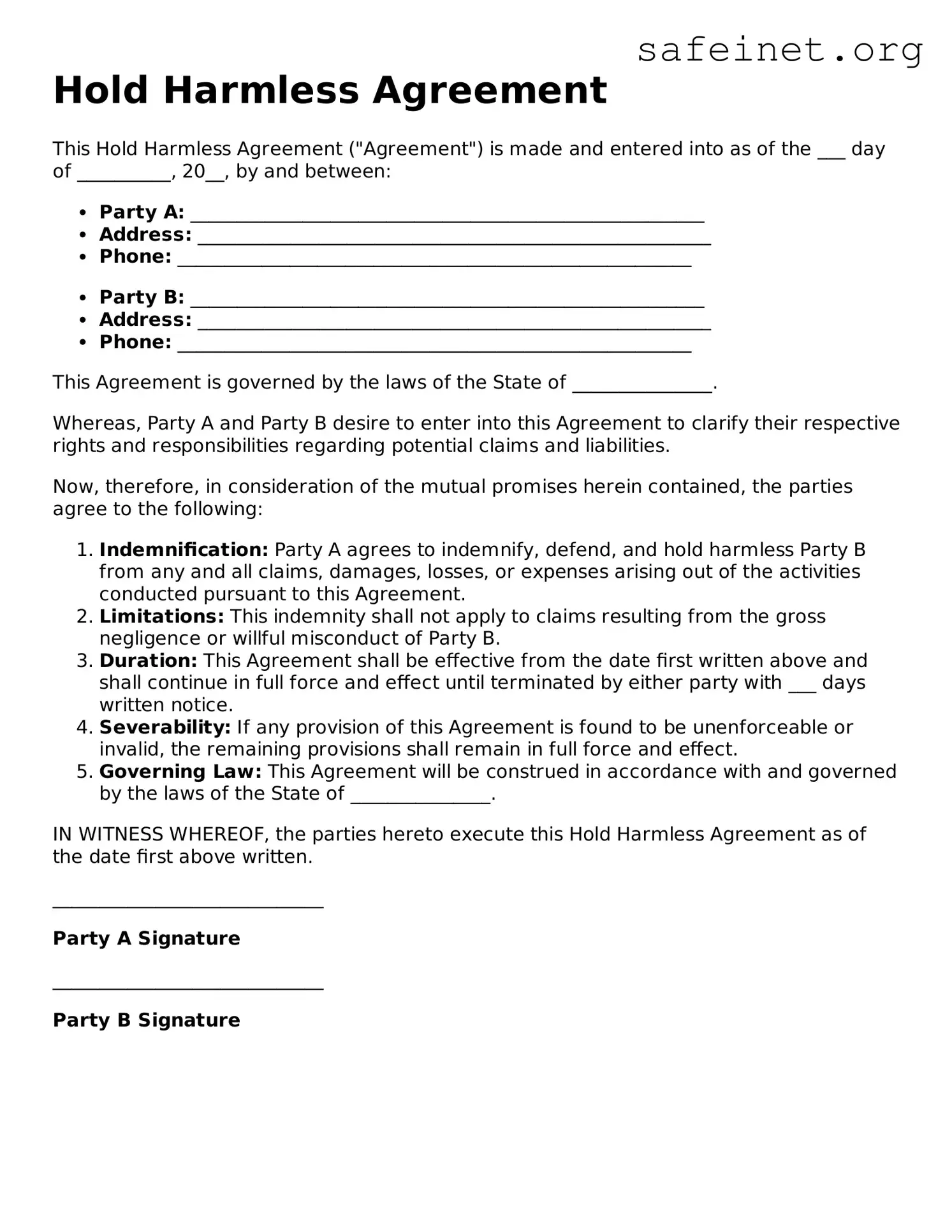What is a Hold Harmless Agreement?
A Hold Harmless Agreement is a legal document that protects one party from being held liable for injuries or damages that occur during a specific activity. It essentially shifts the responsibility for any legal claims that may arise from the activity to the other party involved. This type of agreement is common in a variety of situations, such as rental agreements, events, and partnerships.
When should I use a Hold Harmless Agreement?
Consider using a Hold Harmless Agreement when you are participating in an activity that involves potential risks, such as athletic events, construction projects, or any situation where one party could be held liable for potential damages or injuries. It is often used to protect businesses, organizations, or individuals from legal claims that could arise due to negligence.
Who should sign a Hold Harmless Agreement?
Typically, all parties involved in the activity should sign the agreement. This includes the party providing the service or location and the party participating in or using the service. By signing the agreement, each party acknowledges their understanding of the risks and agrees to the terms outlined in the document.
Can a Hold Harmless Agreement protect against intentional misconduct?
Generally, a Hold Harmless Agreement cannot protect against intentional misconduct or gross negligence. Courts typically invalidate clauses that attempt to absolve a party from liability for their wrongful acts. The purpose of the agreement is to cover unexpected accidents and not deliberate harm.
Is a Hold Harmless Agreement legally binding?
Yes, under most circumstances, a Hold Harmless Agreement is legally binding as long as it is clear, concise, and meets the legal requirements of your jurisdiction. However, enforceability may depend on various factors, including how it is worded and the specific laws of the state in which it was executed.
What should be included in a Hold Harmless Agreement?
A comprehensive Hold Harmless Agreement should include the names of the parties involved, a description of the activity or event, the specific risks associated with the activity, and a statement that clearly outlines the waiver of liability. It may also be beneficial to include a clause about governing law to indicate which state’s laws will govern the agreement.
How can I ensure my Hold Harmless Agreement is enforceable?
To enhance enforceability, ensure that the language of the agreement is clear and unambiguous. Both parties should fully understand what rights they are giving up by signing. It's also advisable to have the agreement reviewed by a legal professional before use to confirm it adheres to local laws and regulations.
Do I need a lawyer to draft a Hold Harmless Agreement?
While it is possible to draft a Hold Harmless Agreement without a lawyer, consulting one is highly recommended. A legal professional can ensure the document accurately reflects your intentions, complies with relevant laws, and provides the necessary protection tailored to your specific situation.
Can I change a Hold Harmless Agreement after it's been signed?
Once a Hold Harmless Agreement has been signed, changing its terms can be challenging. Both parties must agree to any modifications, and it's best to document those changes in writing. Ideally, a new agreement should be executed to replace the original if significant changes are made.
What happens if a party does not abide by the Hold Harmless Agreement?
If a party fails to honor the terms of a Hold Harmless Agreement, the other party can seek legal remedies. This could involve filing a lawsuit to enforce the agreement or seeking damages caused by the breach. The context and specific language of the agreement will influence the available legal recourse.
